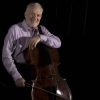Tai Chi: Power/Flexibility
Softness is Strength
- A core principal of the traditional Chinese martial art, Tai Chi.
- To apply the Tai Chi concept of ‘soft power’ to playing the cello.
- SOFT POWER derives its unique combination of strength and flexibility through harnessing your body’s natural weight. Any source of tension in your arms or back blocks the natural transfer of weight into the fingerboard and strings.
- A common source of tension for cellists develops when either the left or right thumbs are tight. Intonation, vibrato and ease of shifting are all compromised if your left thumb squeezes the fingerboard. Squeezing your right thumb into the frog interferes with dropping into and feeling the natural resistance of the string.
- Always be aware of both hands. A tight bow grip can make it more difficult to loosen the left hand, and a tight left hand often accompanies a tight bow grip.
- Relaxing to gain strength and power is counter-intuitive for some people. Imagine a boxer, a dancer, a football player and a gymnast. They could not accomplish their lithe and powerful movements if their limbs or bodies were stiff. Understand how softness is a prerequisite for strength, agility and power. If you doubt this truth, you will not pursue it with enough passion to find the ways in which your own body can make use of these principles.
- Tight arms usually create tight sounds. A looser body will produce a free, more open and singing sound. (There is a time to press–making music requires everything!) Pressing with the bow rather than using weight and gravity will inhibit the free vibration of the string, similar to pressing on your vocal chords in the front of your neck while singing.
About

Paul Katz
Paul Katz is known for his 26-year career as cellist of the internationally acclaimed Cleveland Quartet; as a world-renown teacher…
See MoreCellosophy
"Softness is strength, tightness is weakness." -Tai Chi Maxim